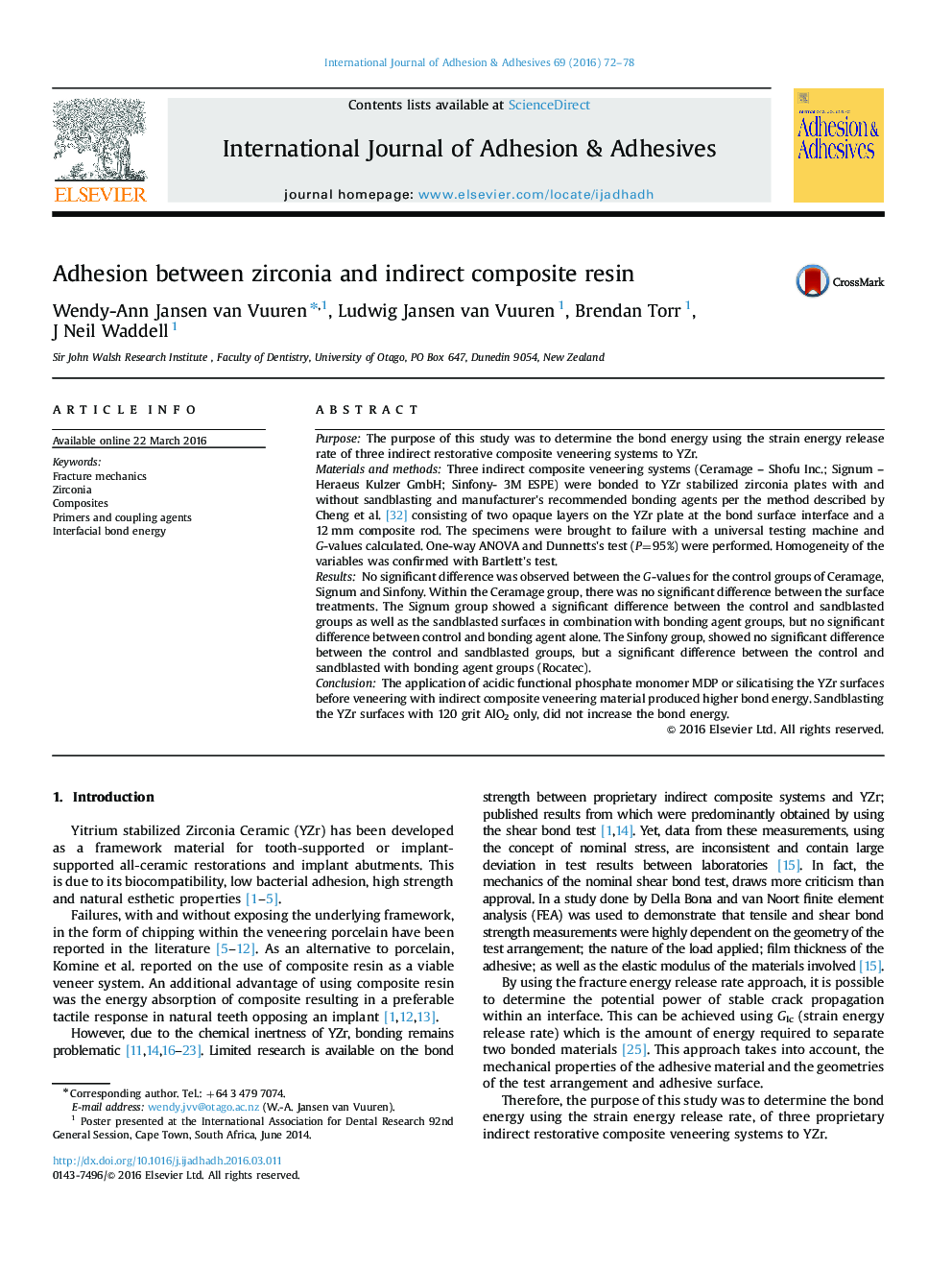| Article ID | Journal | Published Year | Pages | File Type |
|---|---|---|---|---|
| 779838 | International Journal of Adhesion and Adhesives | 2016 | 7 Pages |
PurposeThe purpose of this study was to determine the bond energy using the strain energy release rate of three indirect restorative composite veneering systems to YZr.Materials and methodsThree indirect composite veneering systems (Ceramage – Shofu Inc.; Signum – Heraeus Kulzer GmbH; Sinfony- 3M ESPE) were bonded to YZr stabilized zirconia plates with and without sandblasting and manufacturer׳s recommended bonding agents per the method described by Cheng et al. [32] consisting of two opaque layers on the YZr plate at the bond surface interface and a 12 mm composite rod. The specimens were brought to failure with a universal testing machine and G-values calculated. One-way ANOVA and Dunnetts׳s test (P=95%) were performed. Homogeneity of the variables was confirmed with Bartlett׳s test.ResultsNo significant difference was observed between the G-values for the control groups of Ceramage, Signum and Sinfony. Within the Ceramage group, there was no significant difference between the surface treatments. The Signum group showed a significant difference between the control and sandblasted groups as well as the sandblasted surfaces in combination with bonding agent groups, but no significant difference between control and bonding agent alone. The Sinfony group, showed no significant difference between the control and sandblasted groups, but a significant difference between the control and sandblasted with bonding agent groups (Rocatec).ConclusionThe application of acidic functional phosphate monomer MDP or silicatising the YZr surfaces before veneering with indirect composite veneering material produced higher bond energy. Sandblasting the YZr surfaces with 120 grit AlO2 only, did not increase the bond energy.
